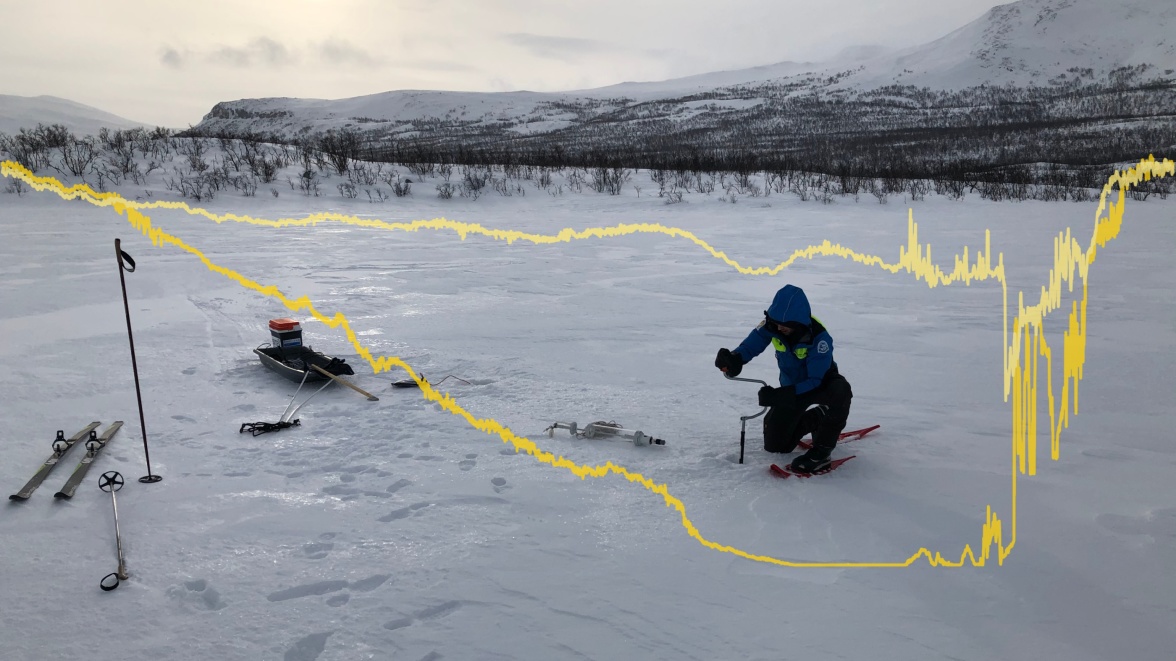The SITES 2023 Calendar theme is “Data in Focus”. The openly available data produced within SITES and stored on the SITES Data Portal is the “golden thread” of the infrastructure, allowing users access to ecosystem data that covers diverse habitats and climate zones across geographical gradients in Sweden. Each month follow along as we highlight a unique SITES dataset.
In Northern Sweden, lakes can be ice-covered for many months of the year, and although the conditions in the lake during this time are cold and dark (depending on the snow and ice conditions), biogeochemical processes in the lake continue. The SITES calendar post for February displays this, as an oxygen gradient develops in Almbergasjön as ice forms, with oxygenated surface waters and oxygen-depleted bottom waters persisting until ice melt begins at the end of May.
At Abisko Scientific Research Station, as part of the SITES Water Thematic Program, lake biogeochemistry data during winter is collected by aquatic sensors deployed under the ice as well as manually by station staff. The SITES lake water biogeochemistry monitoring in Almbergasjön began in 2017 and continues today, providing valuable data to understand how a changing climate, including lake ice-cover decline, will alter lake biogeochemical processes in the future.
Link to data: https://meta.fieldsites.se/objects/plRSfwkbopYGhj2W31TBRKul

The graph displays sub-hourly surface (light yellow) and bottom water (dark yellow) oxygen concentrations in Almbergasjön during winter from ice formation to ice melt in 2021. The photo shows station staff at Abisko Scientific Research Station drilling a hole in the ice on Almbergasjön in order to collect water samples for the routine SITES Water sampling program.